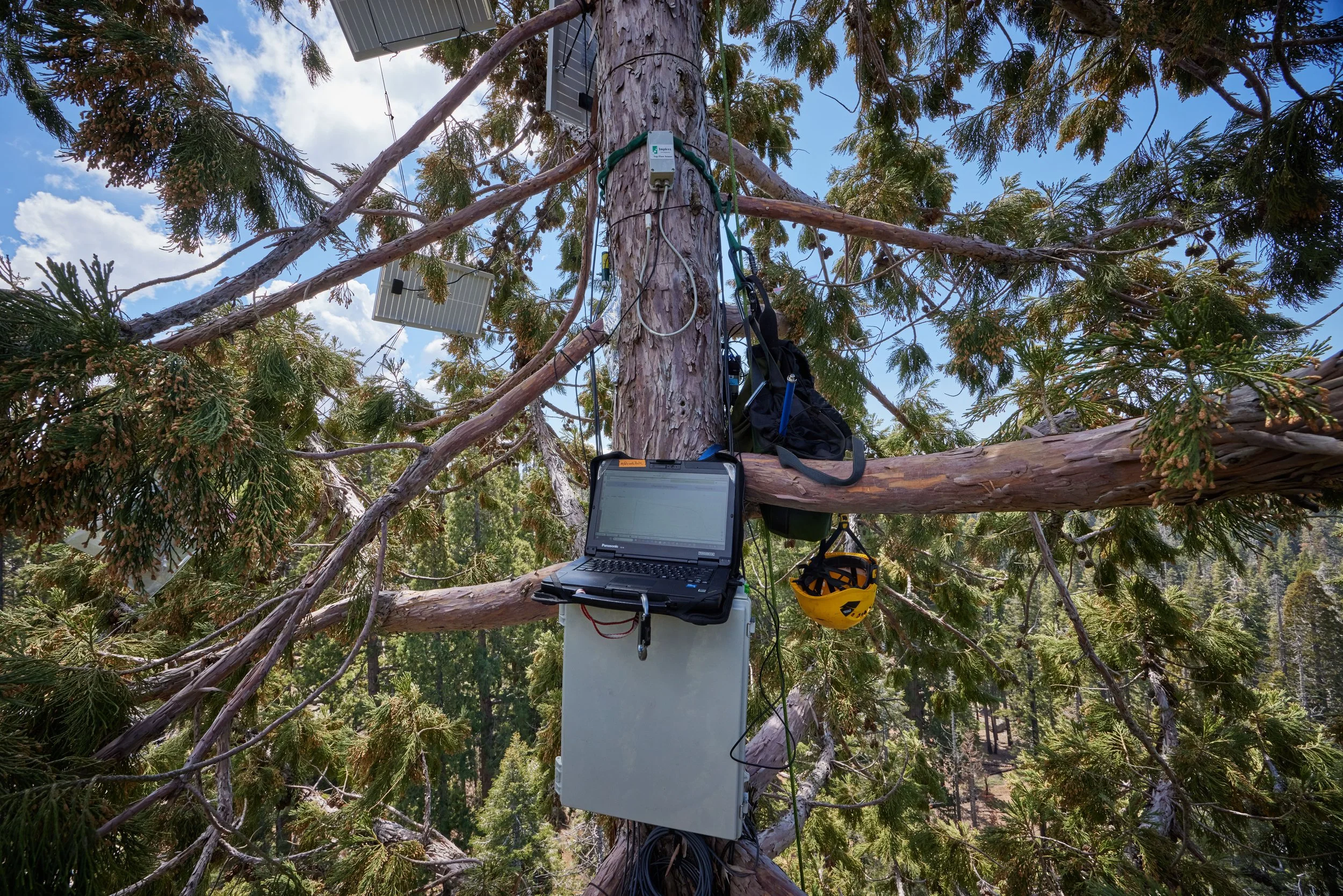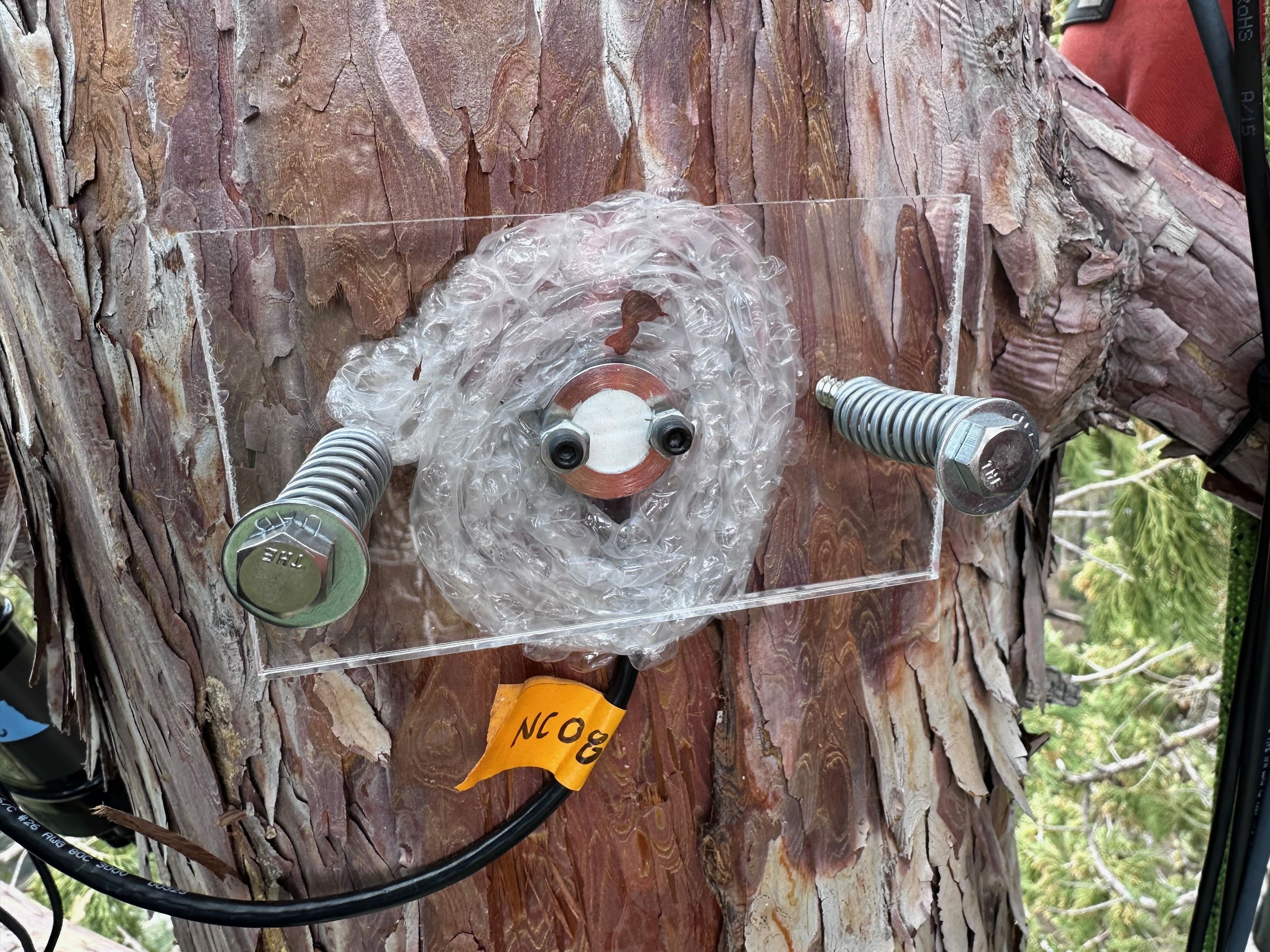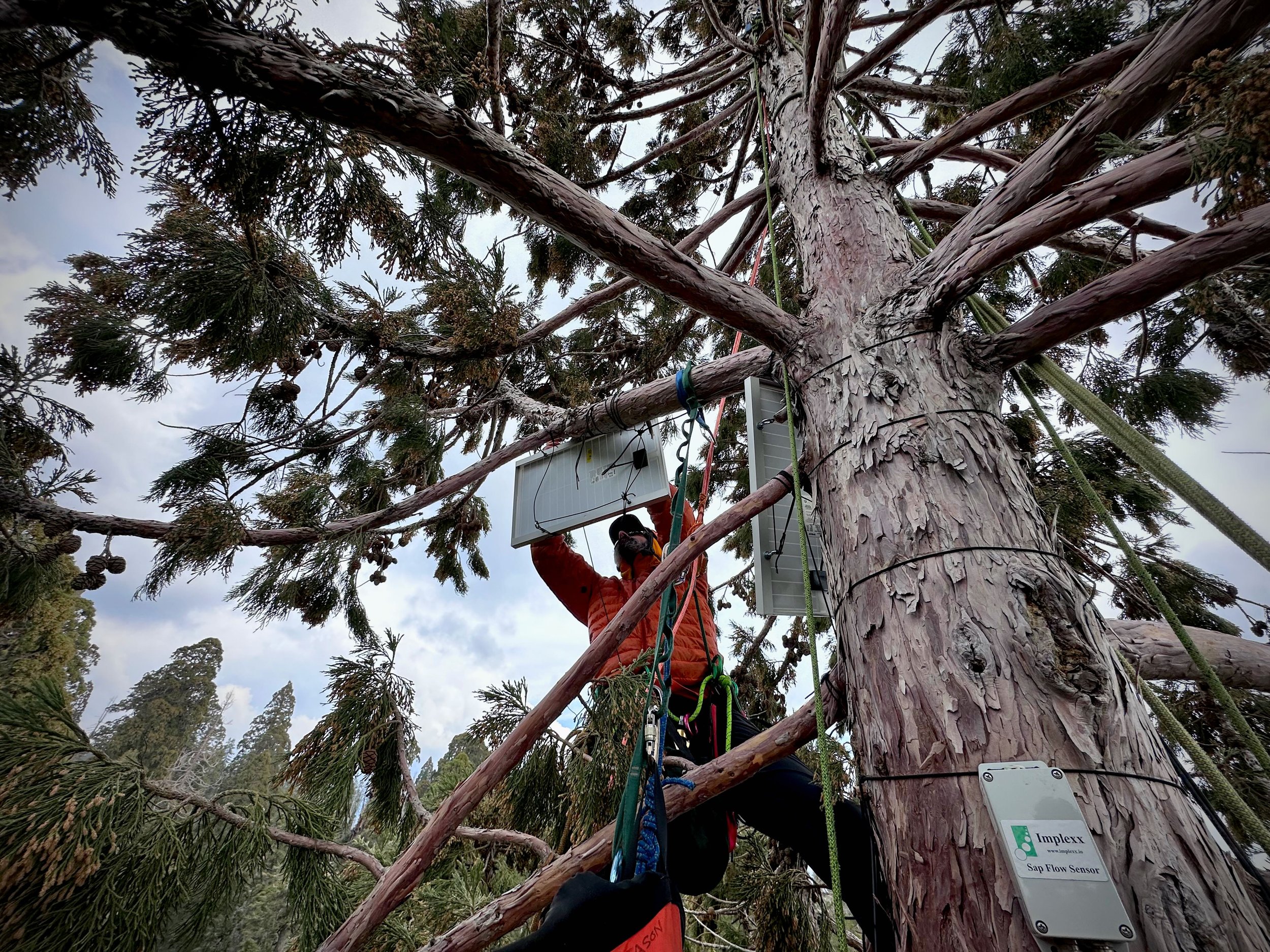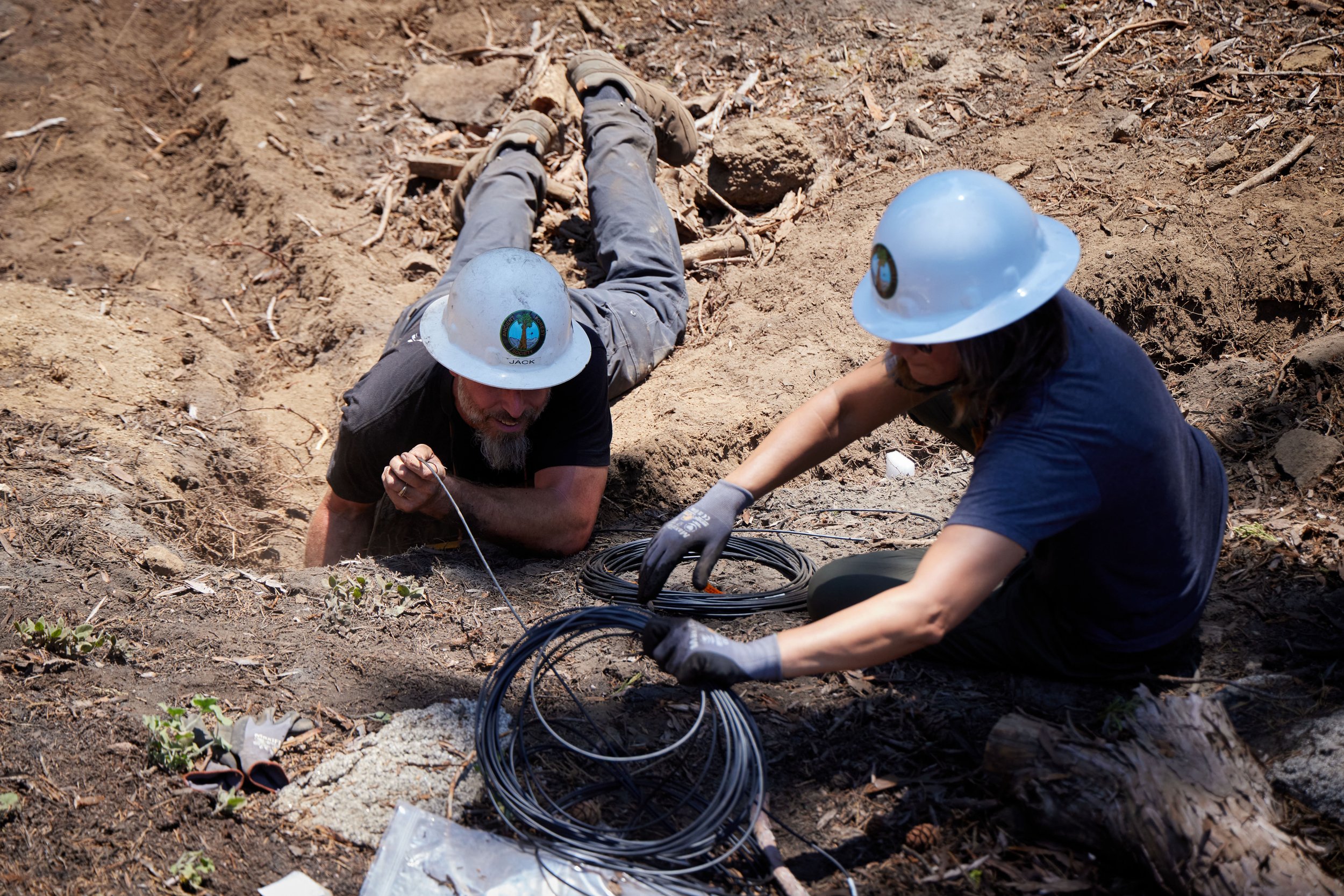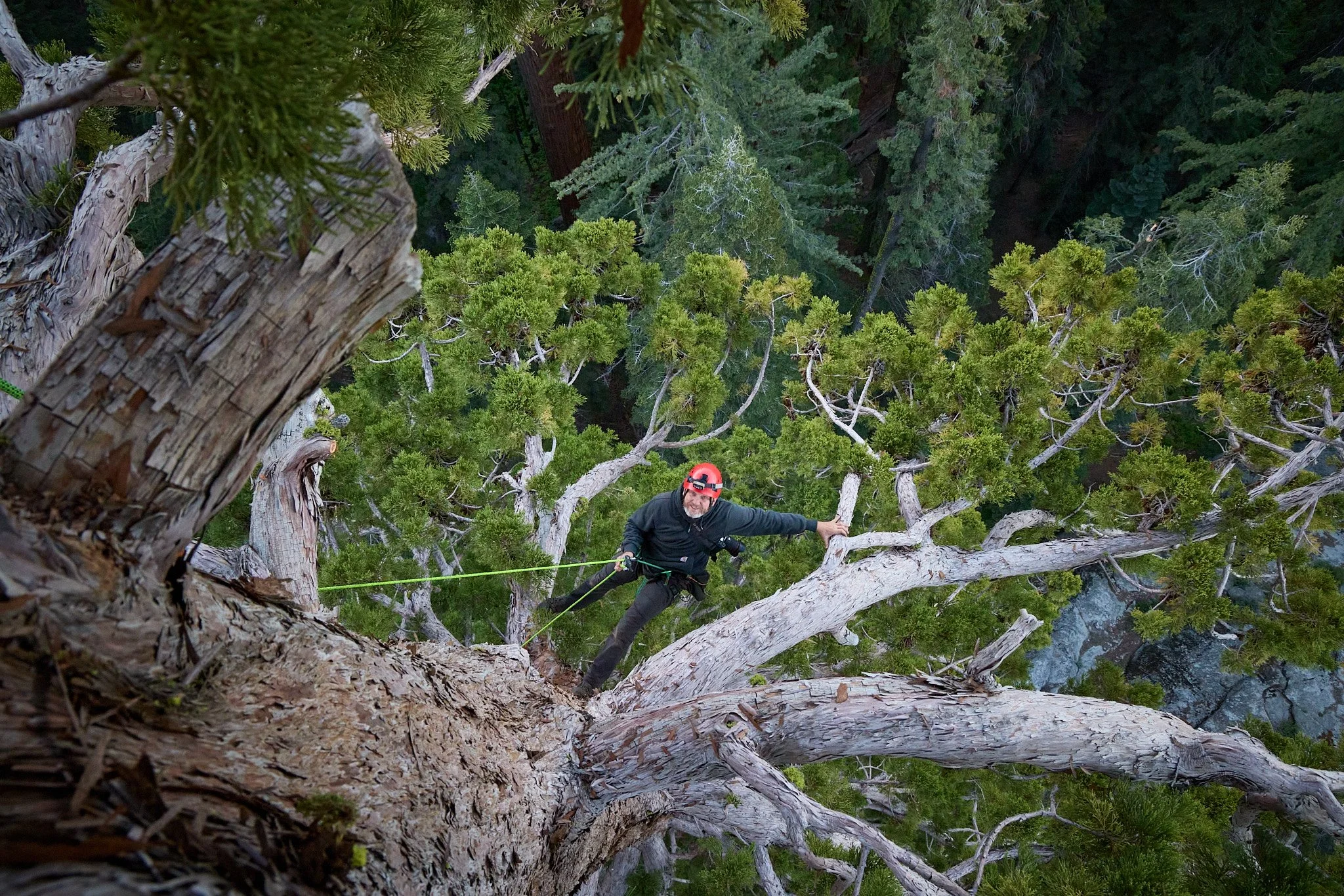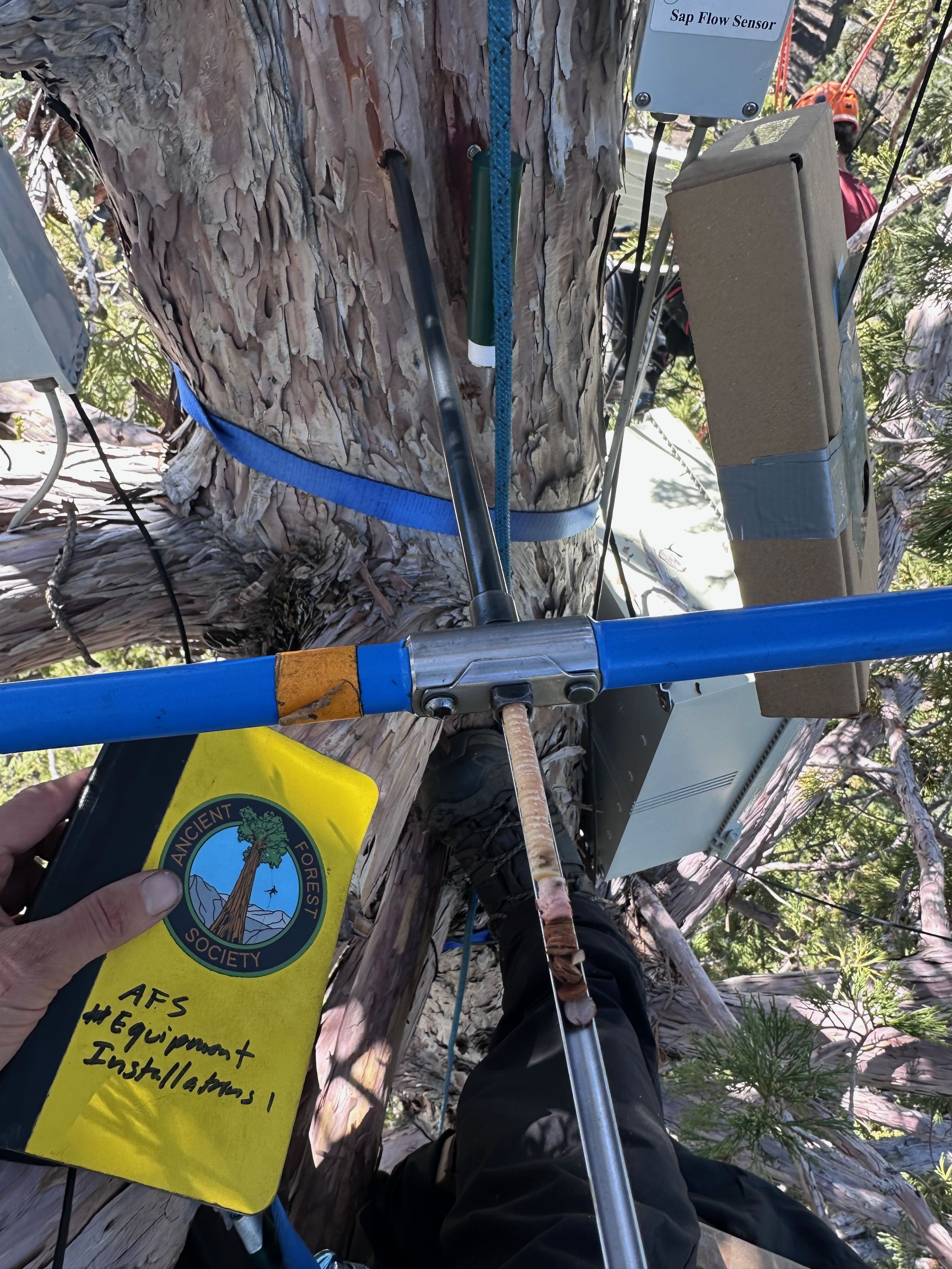
Tree Hydrology Study
This study examines the influence of tree hydrology on giant sequoia drought vulnerability and mortality risk.
The past decade has been challenging for the health of giant sequoia groves. Severe wildfire, drought, rapidly melting snow pack and beetle attack are putting stress on these water-thirsty trees. Our past research and other research we were part of has found that a single giant sequoia tree can use up to 4,000 liters (1,000 gallons) of water on an average summer day. When scaled up to an entire giant sequoia grove, this is an enormous amount of water. How will these ancient trees adapt to a hotter, drier world? Our Tree Hydrology study aims to shed light on this critical question and to provide land managers with actionable information.
Managers need to know which giant sequoia trees are most vulnerable to water stress and damage from drought and fire, the physiological thresholds at which they might start to decline or die, and the climatic conditions that can trigger these impacts. Our goal is to observe how much water giant sequoias use and whether that varies across the landscape.
In better understanding giant sequoias’ hydrologic behavior and survival thresholds, we aim to identify where on the landscape proactive management would be effective to support giant sequoia persistence. The data we are collecting will help our collaborators at UC Santa Barbara create models of sequoia health based on tree water use and guide conservation efforts across Sequoia National Park and throughout the species’ range.

Study Questions
How does giant sequoia tree water balance influence drought vulnerability?
How much water do giant sequoias have, and how strong is their physiological resilience?
How does giant sequoia tree hydrology vary across the landscape and over time?
Methods
8 Study Trees
We are studying eight giant sequoias trees in Sequoia National Park.
Tree Structure
We are collecting tree structural measurements like height, diameter, crown volume, leaf area and wood density and content to characterize each study tree.
Sapflow and Water Status
All eight study trees are instrumented with sapflow sensors at the base of live crown and treetop to measure whole-tree water use. The trees are also equipped with psychrometers to measure the water status of the tree.
Modeling
Our collaborators at UC Santa Barbara will be taking our structural measurements and the data we are collecting to model whole tree water use under varying climatic conditions.
Soil and Climate
Soil conditions like water potential and water content are being monitored at the base of each study tree. Climatic conditions like temperature and humidity are being monitored at the treetop and base of live crown.
Collaboration
We are collaborating closely with scientists from UC Santa Barbara to provide our Park partners with information that will help them successfully manage giant sequoia groves into the future.
Sensor installation schematic. Courtesy of Erin Burk.
Partners and Funders

